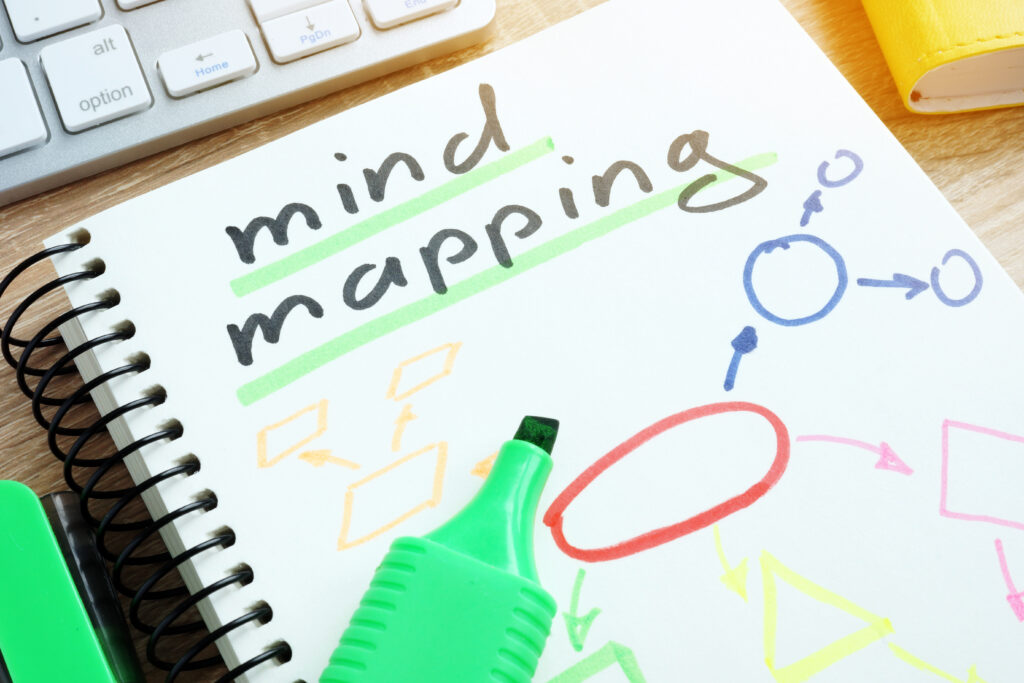
I started using mind mapping after reading I Can See You Naked: A Fearless Guide to Making Great Presentations by Ron Hoff (1988). My first presentation was drawn out like a colorful board game with a route to follow, arrows, and picture images of what I was going to do.
I remember thinking how much easier it was to use than index cards with a text script written on them. It was also much less restricting. I did not feel tied to reading the cards. Rather, I looked at the picture and went from memory. It saved me from the plight of many presenters: that of being tied to a script.
The technique worked so well for me that I started expanding the idea into my teaching efforts. As I read selections from English texts to my students, I drew the events out on paper in a map and graphic format. I would often interject silly ditties and exclamations of passion into the effort to make what I was reading to them stick out in their memory.
Given that my students were at the ‘cool’ age of ‘teen,’ they would often look at me and say, “You are crazy!” My pat answer was always, “Yes, I am, but you’ll remember this because of it.” Moreover, they did.
Students learn and remember graphic organizers better if they create them out of their own mental images and patterns. As a parent who has spent my children’s lifetimes trying to teach them how to learn, I was very excited when I walked into my daughter Shivahn’s college apartment and found mind maps, mnemonics, color, etc. all over one of her walls.
Now, it’s not unusual to find mandalas on her door or on her walls or flashcards scattered about, but this was a huge mind map made from recycled 8.5 X 11-inch pieces of paper. I had no idea what it all meant, but I do know it helped her to get an A in the course. My daughter co-wrote a book with me, Umm…Studying? What’s That?, so it’s reassuring to know that she didn’t ‘just’ write the book but also used the strategies and shared them with her peers.
Research Background for Mind Maps, Etc.
Many experts agree that developing cognitive maps and using advanced organizers increases critical thinking skills.
Long-term memory files information in the brain through patterns, procedures, categories, pairs, and rules. A mind map uses at least three of these five ways to store information, therefore helping the brain remember information better.
A classic mind map begins with a word, phrase, or idea typically placed in the center of a piece of paper. As the author of the mind map expands upon the word or phrase in the middle, the mind map expands to include various ideas that come to mind when considering that central prompt.
Graphic organizers enable the brain to categorize information. A mind map is a non-linguistic representation method of organizing information that enables students to file the information away in long-term memory in multiple modes or memory packets.

